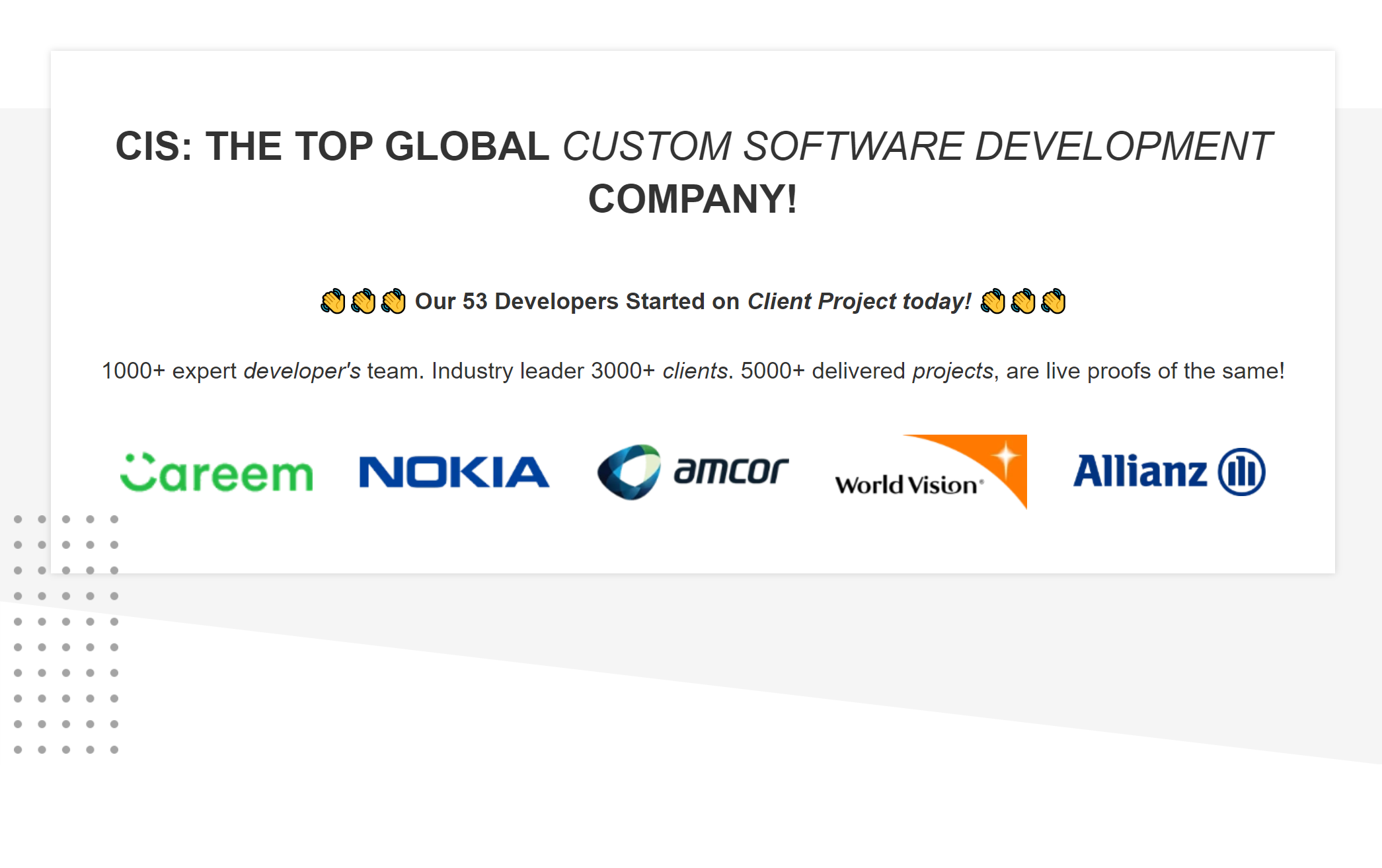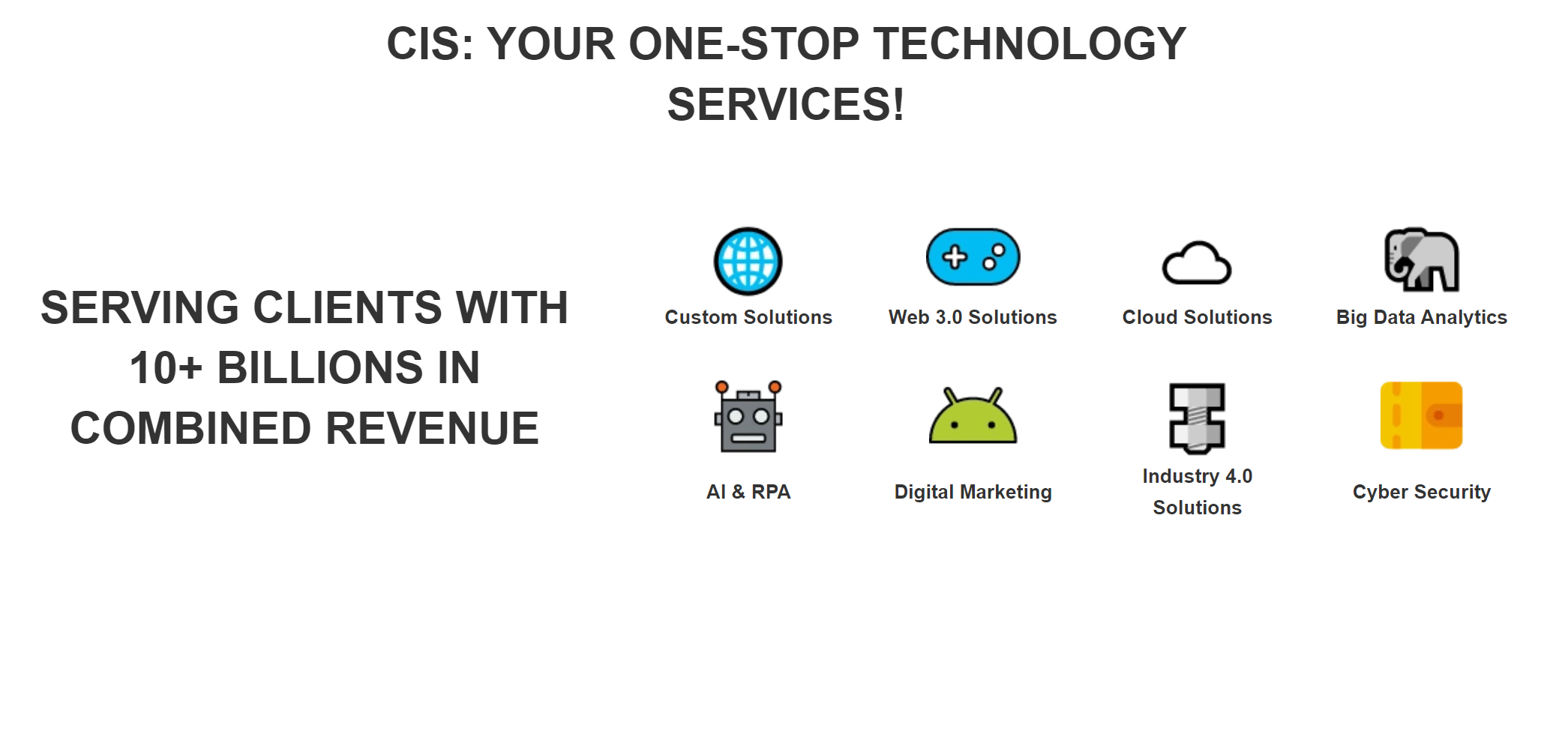Maximizing ROI: The Cost and Benefits of Adopting Sap For Legacy System Modernization for Your Business
- SAP for Legacy system modernization - Detailed Analysis by Enterprise Solutions Experts
Request A Free Consultation - Why Use SAP For Legacy System Modernization



Why Mid-size Companies and Enterprises needs SAP For Legacy System Modernization:
Mid-size companies and enterprises need SAP for Legacy system modernization because it helps them to modernize their existing legacy systems, allowing them to take advantage of the latest technologies, such as cloud computing, mobile applications, analytics and predictive insights. It also provides a comprehensive suite of business applications that can be used to streamline operations and automate processes. Additionally, SAP offers an array of services that help mid-size companies migrate from legacy systems to new ones with minimal disruption. This allows them to gain access to up-to-date features while still taking full advantage of their existing infrastructure investments.
Benefits of using SAP For Legacy System Modernization in Mid-size companies and Enterprises:
1. Increased Efficiency:
By modernizing legacy systems with SAP, companies can reduce manual processes and increase efficiency by automating tasks. This helps to reduce costs associated with labor-intensive operations while increasing the accuracy of data entry and output.
2. Improved Security:
Modernizing legacy systems with SAP solutions provides enhanced security features that protect sensitive data from unauthorized access or malicious attacks. This is especially important for mid-size companies and enterprises as they often have more valuable information stored in their databases than smaller businesses do.
3. Greater Accessibility:
With an updated system, users can access their company's data from anywhere at any time through a secure connection, allowing them to make decisions faster and respond quickly to customer needs or market changes without having to be physically present in the office or onsite location where the system resides.
4. Improved Scalability:
Legacy systems are limited when it comes to scalability due to outdated technology - but not anymore! By modernizing these systems with SAP solutions, mid-size companies and enterprises will benefit from increased scalability which allows them to easily add new features, functions, or users as needed without having to completely overhaul the entire system every time something changes or needs updating..
5. Reduced Maintenance Costs:
Upgrading legacy systems eliminates many of the costs associated with maintaining outmoded hardware and software components that may no longer be supported by vendors or require specialized expertise for updates/repairs - freeing up IT resources for other projects like process optimization initiatives instead of simply keeping existing infrastructure running smoothlyDetailed Features of SAP For Legacy System Modernization for Mid-size companies and Enterprises:
1. Automated Migration:
SAP provides automated tools to help mid-size companies and enterprises migrate their legacy systems to modernized solutions quickly and efficiently. These tools include the Legacy System Migration Workbench (LSMW) and the Software Update Manager (SUM).
2. Business Process Reengineering:
SAP helps mid-size companies and enterprises reengineer their existing business processes in order to realize greater efficiency gains from their modernization efforts. The company's suite of software products includes a range of process modeling, analysis, optimization, simulation, and implementation capabilities that can be used for this purpose.
3. Data Integration:
SAP offers integrated data integration services that enable mid-size companies and enterprises to integrate disparate data sources into a single system without significant disruption or downtime during the migration process. This ensures that all relevant information is accessible via one platform while allowing businesses to maintain control over critical data assets at all times.
4. Application Modernization Services:
SAP provides application modernization services designed specifically for mid-sized businesses and enterprise customers who are looking to update outdated applications with modern technology standards such as HTML5 or JavaScript frameworks like AngularJS or ReactJS . These services ensure that customers benefit from improved performance, scalability, security, user experience, agility etc., when transitioning from legacy systems to more advanced solutions built on these technologies .
5 Security & Compliance Solutions :
To protect customer's sensitive data during migration projects , SAP has developed comprehensive security solutions which provide end -to -end protection against cyber threats including malware , ransomware , phishing attacks etc., Additionally , they also offer compliance solutions which allow organizations comply with industry regulations such as GDPR , HIPAA etc.,Request A Quote - Why Use SAP For Legacy System Modernization
Who are the Users of SAP For Legacy System Modernization:
The customers using SAP for Legacy system modernization are typically large enterprises and organizations that have been using legacy systems for many years, such as government agencies, financial institutions, healthcare providers, manufacturers and retailers.
How to ensure Data Security and Compliance with SAP For Legacy System Modernization:
1. Ensure that all data is encrypted and secure:
Use encryption techniques such as AES, RSA, or other industry-standard algorithms to ensure that all data stored in the legacy system modernization is protected from unauthorized access.
2. Adopt a robust authentication process for users:
Implement multi-factor authentication protocols such as two-factor authentication (2FA) or biometric identification to ensure only authorized personnel can access the system.
3. Monitor user activity on the platform:
Track user activities by logging events and monitoring changes made to sensitive information within the system so that any suspicious behavior can be quickly detected and acted upon accordingly.
4. Establish strong security policies:
Develop stringent security policies around how customer data should be handled, including who has access to it and what processes must be followed when accessing it, in order to protect against potential breaches of customer privacy or misuse of confidential information.
5. Utilize SAP HANA Security Solutions:
Leverage SAP HANA's built-in security solutions such as its advanced auditing capabilities, role-based access control (RBAC), single sign-on (SSO) support, identity management services (IMS), etc., to further enhance your existing security measures and maintain compliance with applicable regulations like HIPAA or GDPR if necessary.How SAP For Legacy System Modernization can increase organization Productivity, Agility, and Profitability:
SAP for Legacy System Modernization can help organizations increase productivity, agility, and profitability in a number of ways. By modernizing legacy systems with SAP solutions, organizations can reduce the time and cost associated with manual processes and data entry. This leads to increased efficiency as well as improved accuracy. Additionally, SAP's advanced analytics capabilities allow businesses to gain deeper insights into their operations resulting in better decision making that can lead to higher profits. Finally, by leveraging cloud-based solutions from SAP, companies can benefit from faster deployment times which allows them to quickly adapt to changing market conditions and customer needs leading to greater agility.
Request A Quote - Why Use SAP For Legacy System Modernization
How to Measure KPIs and increase Benefits of implementing SAP For Legacy System Modernization in Mid-size companies and Enterprises:
1. Establish a baseline of existing performance metrics:
Before implementing SAP for legacy system modernization, it is important to establish a baseline of the current performance metrics such as customer satisfaction, operational efficiency and cost savings. This will provide an understanding of how much progress can be made when modernizing legacy systems with SAP.
2. Monitor KPIs during implementation:
During the implementation process, it is important to monitor key performance indicators (KPIs) such as user adoption rates, data accuracy and overall speed of processes in order to measure success or failure of the project. This information should be documented so that any potential issues can be addressed quickly and efficiently before they become larger problems for the organization.
3. Analyze post-implementation results:
Once SAP has been implemented into the organization's legacy system, it is important to analyze post-implementation results in order to determine if there were any benefits from using this technology solution. The analysis should focus on identifying areas where improvements have been made compared to pre-implementation metrics and determining whether these changes are providing value for mid-size companies and enterprises that use this technology solution.
4. Develop strategies for continuous improvement:
After analyzing post-implementation results, organizations should develop strategies for continuing improvement in order to maximize return on investment from using SAP for their legacy system modernization efforts. Strategies could include developing new features or applications based on customer feedback; increasing integration between different parts of the system; improving user experience; or automating manual processes with AI technologies like machine learning algorithms or natural language processing (NLP). All these activities will help increase benefits from implementing SAP into mid-size companies and enterprises' legacy systems over timeHow SAP For Legacy System Modernization can increase Employee Morale in your organization:
SAP for Legacy system modernization can increase employee morale by providing a more efficient and user-friendly platform to work on. This will reduce the amount of time needed to complete tasks and make it easier for employees to access data, which can lead to increased job satisfaction. Additionally, with an improved system in place, there will be fewer errors due to outdated technology or manual processes that often slow down progress. Finally, having an up-to-date legacy system also gives employees confidence that their organization is investing in them and their future success.
How SAP For Legacy System Modernization is Better than its Competitors:
SAP for Legacy system modernization is better than its competitors in several ways. First, it provides a comprehensive set of tools and services to help organizations modernize their legacy systems quickly and cost-effectively. This includes built-in support for automated migration processes, data transformation capabilities, integration with existing systems and applications, as well as robust security features designed to protect sensitive data from unauthorized access. Additionally, SAP's platform offers powerful analytics capabilities that allow organizations to gain insights into their legacy data and make more informed decisions about how best to modernize their legacy systems. Finally, SAP's cloud-based solutions are highly scalable so they can easily accommodate the needs of any organization regardless of size or complexity.
Request A Quote - Why Use SAP For Legacy System Modernization
Cost to Develop & Implemention of SAP For Legacy System Modernization:
The cost to develop and deploy a SAP for Legacy System Modernization project will vary depending on the scope of the project, number of users, complexity of the system and other factors. Generally speaking, it can range from tens of thousands to millions of dollars.
Why outsourcing implementation services for SAP For Legacy System Modernization is better for Mid-size companies and Enterprises:
Outsourcing implementation services for SAP for Legacy system modernization is a great option for mid-size companies and enterprises because it can provide many benefits. Outsourcing these services allows the company to focus on core competencies while leaving the technical aspects of the project to experienced professionals. This helps ensure that the project is completed quickly and efficiently, saving time and money in the long run. Additionally, outsourcing provides access to specialized expertise that may not be available within an organization's internal team or budget constraints. Finally, outsourcing can reduce risk by providing offsite support if needed during times of uncertainty or when there are changes in personnel or technology.
Request A Quote - Why Use SAP For Legacy System Modernization


